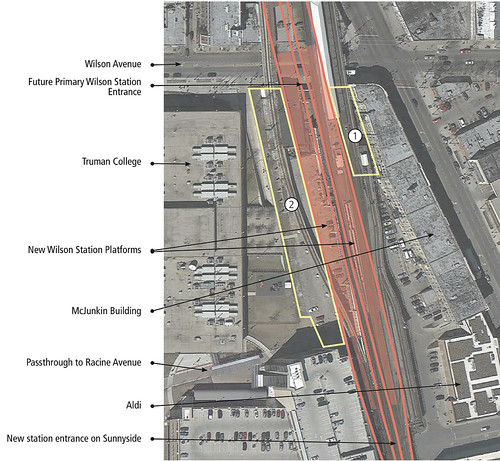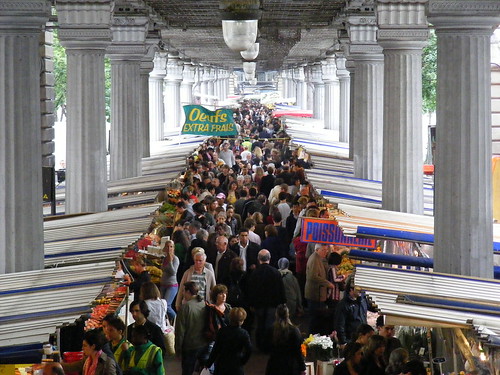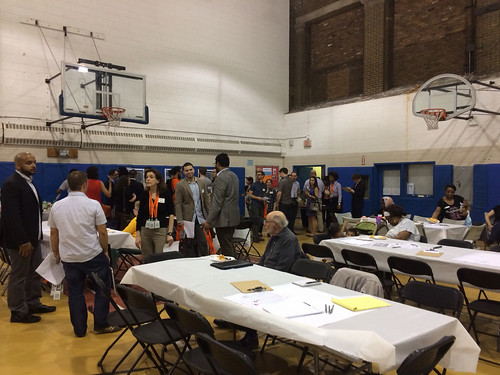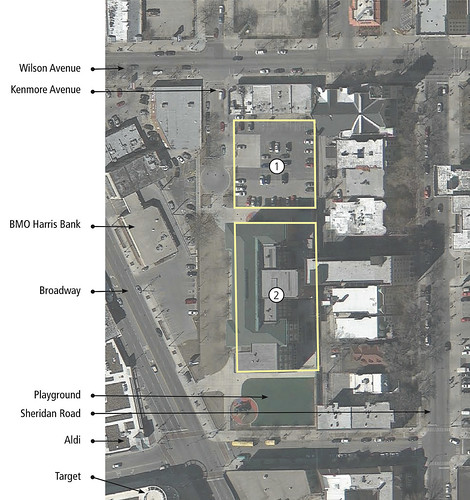It’s an exciting time to be in Uptown. The Broadway streetscape and road diet, which will hopefully be completed within a few months, as well as the reconstruction of the Wilson ‘L’ station have the potential to transform the center of the neighborhood. This potential has not gone unnoticed by the Metropolitan Planning Council. On Thursday evening in the Clarendon Park Community Center, MPC hosted the first of three community workshops to gather input on how residents would like to see their community develop.
The focus of the three workshops is on two currently vacant buildings: Stewart school, a 107-year-old building on Broadway that has sat empty since Chicago Public Schools closed it last year, and a lot next to the Wilson ‘L’ stop. The station rehab will shift the southbound express track eastward to join the other three tracks, opening up a new location for development.

46th Ward Alderman James Cappleman opened the meeting by stating his desire to see the Stewart reopened as a magnet school. MPC program director Marisa Novara then outlined the purpose of the workshops and discussed her organization’s desire to see Chicago's transit-oriented development ordinance used more extensively. She said the Chicago region doesn’t always effectively take advantage of public transportation and develop properly around transit stations.
The goal of the Uptown workshops is to plan proactively in the context of the neighborhood and market reality, and ensure that development takes full advantage of existing transit assets. Cappleman will use the workshop results in talks with the CTA and CPS over the future of the two sites.
Uptown is well-suited to pedestrian- and transit-oriented development. As many as 45 percent of residents, depending on the census tract, do not own cars, and 97 percent of housing is contained in multi-unit buildings. The $203 million Wilson rehab, which will transform the station into a transfer station for the Red and Purple lines, represents a major public investment in transit.
Following a question and answer segment, residents were divided into groups to discuss questions about Uptown’s strengths, how the buildings in question should be used, and what amenities would further strengthen the neighborhood. After these brainstorming sessions, a representative from each group had shared the comments with the rest of the attendees.
Several groups supported maintaining the Stewart building as a public facility as opposed to selling it to a developer. CPS plans to sell the building in a competitive bidding process starting next month, and community feedback from the workshop will influence the bid requirements.
What’s notable about the former school site is its parking lot, located north of the building. The current zoning, RT-4, permits townhomes or two-flats on the site, but the zoning could be changed to permit other uses.
Several groups supported development that would bring a more diverse mix of uses to the area, such as a shared workspace or small business incubator. One group argued there should be more public spaces in the neighborhood, citing European town squares as a best practice, an idea that fits well with requests for a better and larger farmers market in the area.

However the spaces are used, it’s important that developers take advantage of the TOD ordinance, which reduces the parking minimums for buildings located new transit stations. Doing so will promote public transportation use, while building excessive amounts of parking spaces would induce more car trips.
The next workshop takes place Monday, May 12, at 6 p.m. at the community center, 4501 North Clarendon. At that meeting, attendees will have the chance to further develop the ideas from Thursday's event. The series will culminate on May 29, when three development experts will respond to the community’s ideas.







